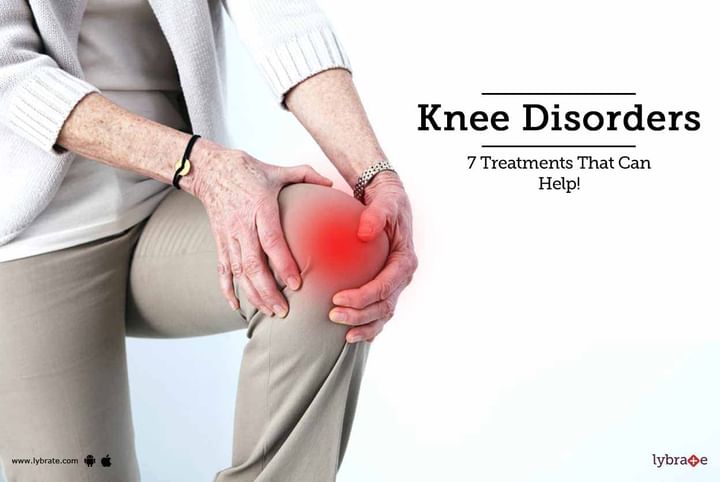Get the App
For Doctors
Login/Sign-up
Last Updated: Oct 23, 2019
BookMark
Report
Knee Disorders - 7 Treatments That Can Help!
Dr. Abhinav BhatnagarOrthopedic Doctor • 12 Years Exp.DNB - Orthopedics/Orthopedic Surgery, DNB - Orthopedics/Orthopedic Surgery, Fellowship in Sports injuries, Shoulder & Knee arthroscopy, Diploma In Orthopaedics (D. Ortho)
The knee is one of the biggest and most complex joints in the body. The knee is joined by the thigh bone (femur) to the shinbone (tibia). The little bones that keep running nearby the tibia (fibula) and the kneecap (patella) are alternate bones that make the knee joint. Ligaments associated with the knee-related leg muscles move the knee joint. Tendons join the knee bones and provide help to the knee:
- The foremost tendon keeps the femur from sliding in reverse on the tibia (or the tibia sliding forward on the femur).
- The back tendon keeps the femur from sliding forward on the tibia (or the tibia from sliding in reverse on the femur).
- The average and horizontal tendons keep the femur from sliding side to side.
Some of the most common knee joint conditions are as follows:
- Chondromalacia patella: Irritation of the ligament underneath the kneecap (patella), bringing about knee pain. This is a typical reason for knee pain in youngsters.
- Knee osteoarthritis: Osteoarthritis is the most widely recognized type of joint inflammation and regularly influences the knees. It is caused by maturing and wear and tear of the ligament. Its indications may include knee pain, swelling and stiffness.
- Meniscal tear: Damage to a meniscus, the ligament that supports the knee, regularly happens when the knee is twisted.
- ACL strain or tear: The ACL is in charge of a substantial part of the knee's flexibility. An ACL tear regularly leads to the knee popping out and may require surgical repair.
- PCL strain or tear: PCL tears can bring about pain, swelling, and knee unsteadiness. These wounds are less normal than ACL tears, and exercise based recovery is generally the best alternative.
- Patellar subluxation: The kneecap slides or separates along the thigh bone during movement, causing pain around the knee cap.
- Patellar tendonitis: Inflammation of the ligament related the kneecap (patella) to the shinbone. This happens mostly in competitors from rehashed bouncing.
Some of the most common and effective knee treatments are as follows:
- RICE treatment: Rest, ice, compression and elevation stand for RICE. The RICE treatment is a great solution for some knee conditions.
- Pain medications: Over-the-counter medicines or pain relievers, for example, acetaminophen (Tylenol), ibuprofen (Motrin), and naproxen (Aleve) can treat most knee joint pains.
- Non-intrusive treatment: An exercise routine can strengthen the muscles surrounding the knee, expanding the knee's strength.
- Cortisone infusion: Injecting steroid into the knee that can diminish pain and swelling.
- Hyaluronan infusion: Injection of a “gooey” material into the knee that may diminish pain from the joint and delay the requirement for a knee surgery.
- Knee surgery: Surgery might be done to amend a number of knee conditions. Surgery can supplant or repair a torn tendon, expel a harmed meniscus, or replace a seriously harmed knee.
- Arthroscopic surgery: An endoscope is embedded into the knee joint. Arthroscopic surgery has a shorter recovery and restoration period than open surgery.



+1.svg)
